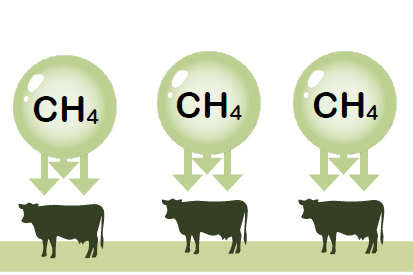Tackling methane from the inside
Bringing a new science or technology product to market can be time-consuming and expensive but help is on hand to develop tools to reduce onfarm emissions. Delwyn DIckey takes a look at bolus technology to reduce methane emissions.

It’s been two years since Ruminant Biotech formed and quietly got underway with research aimed at developing a bolus to reduce methane emissions produced in the rumen of livestock.
Funding initially came from a group of very supportive individual investors to start development, Ruminant Biotech chief executive George Reeves says.
Then in January the government announced it would be contributing $7.8 million toward the CALM (Cut Agricultural Livestock Methane) programme project.
Ruminant Biotech is now raising more capital to co-fund the government grant and deliver the programme over the next three years. An extra boost came in April when they were the first recipient of funding, to the tune of nearly $1.8m, from the newly formed Centre for Climate Action Joint Venture, an investment fund established by MPI and several large agribusiness companies aimed at helping pasture-based farmers reduce agricultural emissions.
“It’s exciting and ground breaking work,” says George, who sees a need to seriously reduce emissions globally but also sees this project as an opportunity for New Zealand farming if they get it right.
“We can make a real difference to enable sustainable farming and low-emissions meat, milk and wool. This is what all the sentiment in market is heading for. Overseas consumers and national customers are wanting planet-friendly products,” he says.
But while our pastoral grazing systems are a strong selling point for NZ farm products internationally, much of the work around reducing methane in animals focuses on additives to their feed.
“These are practical for a beef feedlot, or a shed-housed dairy system in Europe – factory farming,” George says. “But they are not practical for beef stock out on the hills grazing for months or dairy animals in a pasture-fed system like ours when they come into the shed and on to feed pads at most twice a day. Many of the additives don’t last long after cows have eaten them.”
Their product has similarities to some of the additives in that it has the same active ingredient – a methane-inhibiting compound, found in one promising additive – red seaweed.
Because it is a naturally occurring organic compound they are able to synthesize, it means they don’t need to invest in growing, cultivating, harvesting and processing seaweed to get that active ingredient, he says.
“It occurs naturally and is all around us, so is easy to manufacture.”
The only link to the sea is salt water used at the start of the process.
This makes production very scalable, with an unlimited supply of the active ingredient.
“At the moment we know we can source enough to treat close to every [livestock] animal in New Zealand.”
Taking a new product to market can be hampered if there are barriers to adoption and this saw the researchers look at boluses – widely used in agriculture already, especially for sheep.
Farmers are relatively familiar with how to use them, and how to safely apply them, George says.
Importantly, most farmers have access to the cattle crushes and head bails needed.
“If you’re trying to train a farmer to use something that is completely novel, and they don’t have experience and don’t have the right farm infrastructure, it makes it a lot more challenging – a greater barrier to adoption.”
The bolus design they are going for slowly releases the active ingredient over a long period, with the capsule designed to eventually break down and be expelled rather than an eroding bolus. Among other uses, boluses are currently used in prevention of facial eczema, adding minerals and trace elements to diets, with some of the newer ones focusing on the prevention of milk fever caused by a drop in cows’ calcium levels post-calving.
The company also wanted to fit in with farm management practices and how often an animal is handled. While this isn’t so important for dairy animals which are in and out of the shed and being handled regularly, it is for sheep and beef animals which have much less contact with the farmer. This has seen them aiming at a bolus with six-month lifespan as that will fit in best with a sheep and beef farm’s animal management practices and would be marketed as suitable for once-a-year application.
This will also see them aiming at the government target of a 30% methane reduction by 2030. A 90% reduction for three months would achieve that.
“Longer-term, the intention would be to put a new bolus in every six months, but you’d need to prove first that it’s safe over a long period of time,” George says.
Ruminant Biotech hope to bring their product to market in 2025.
Much of on-farm science and technology has traditionally dealt a lot with chemicals.
Some have been used for hundreds of years, and are well known, says Professor Travis Glare, director of Research Management Office & Bio-protection Research Centre at Lincoln University. But with all the steps involved, getting any kind of science product to market within 10 years of starting is almost unbelievable, he says.
The science behind tackling on-farm emissions is new, and there is some urgency to get these new products onto the market.
“It’s good to see new emissions reduction products get to this point. We’re doing it in really fast time in terms of science. In terms of the climate crisis – yesterday would be great.”
The new product has to be registered with the Ministry of Primary Industries (MPI). But to get to that point all of the research needs to have been completed with appropriate data included in the registration package. Animal health is one area that can’t be covered quickly and is very expensive and time consuming.
“It depends on the experiment and what’s found, but you would have to go through animal feeding trials which is for the life of the animal, looking for any changes in their behaviour through to weight gain, and probably through to an autopsy. So you can’t do that rapidly.”
“And if something should turn up from this then there’s a whole new level of studies you would need to do,” he explains.
And it’s not just risks to the livestock that need to be looked at.
“You also need to show these things don’t affect any other organisms like those that might be able to eat the compounds in the faeces like earth worms, beneficial invertebrates and possibly birds.”
But wait – there’s more.
“Along with having to show there is the desired effect happening – that you are reducing methane over time, you have to show and that you’re not causing any other changes – for example if it’s going into milking cows you’d need to show there was no change in milk.”
You can’t just register the active ingredient and say we’ll put it in something later, Travis says. So, in this instance, the bolus would also need to be registered. Fortunately bolus technology has been around since the 1970’s. As the science has already been done on boluses in animals systems and how to do it without causing damage to the animal this is a good way of delivering the active ingredient, Travis reckons, and will save time. But that process can’t change significantly without having to go back through registration. Each and every step requires upfront money, with no guarantees there will be a saleable product at the end. There is plenty of support from both industry and research organisations for Ruminant Biotech’s efforts and Travis sees this as one of New Zealand’s strengths as a small nation.
“We often have strong collaborations and partnerships between government, research organisations and industry, and this helps us get ahead. Getting people alongside MPI so they know what’s coming and can work with you around registration also helps, he says. Just dropping a new product on them isn’t the best way to do it.”
While more emissions-reducing products and technologies are sorely needed, from a commercialisation point of view Travis is very interested in who will be buying these products and why.
After going to all the trouble and expense of developing products to reduce methane, Travis wonders how many farmers will actually reduce their methane if there isn’t a driver for it – a reward for doing so.
“Where is the carbon trading equivalent for farmers to be rewarded for what they’re going to do?” he asks.
Challenges of commercialisation
So what are some the challenges they and other companies will have to face to bring a new science or tech product to market?
Dr Guy Bate is a Lecturer in Technology Commercialisation and Strategy at the University of Auckland Business School and previously worked as a consultant for many years including in the area of pharmaceuticals and human health.
Aside from it not always being clear what a technology can or will do early on while it is being investigated and developed, the number of different groups that will be involved with the product other than just the end user is what makes developing new science and technology products harder, he says.
“For medical technologies and pharmaceuticals for example, you have health professionals, government payers and health service buyers – DHB’s, who are all vital decision-makers, as well as the patient.”
“Critical and powerful stakeholders in science and technology-based industries are the government’s regulatory bodies. Regulators need to be sure that products work effectively and appropriately. They also want to know that a product is safe, and that it can be manufactured and supplied according to appropriate standards.”
This gets even more complicated if you’re looking at producing something that will be sold overseas – as Ruminant Biotech hopes to do.
Different countries each have their own regulatory systems so a new product, be it agritech, medical technology, or pharmaceuticals will need to know very early on exactly what regulations will apply to their new product in the countries they hope to market it in, so they can take those details into account during development.
Scientific studies to support product claims may also need to be done which may see significant investments in both time and money.
“In very highly regulated industries such as human pharmaceuticals, this means that the commercialisation process can take many years, and the probability of getting a product to market is very low,” says Guy.





